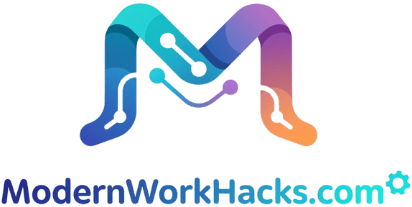Microsoft just solved its thorniest public relations challenge—and did it with a bold, transparent move that other tech giants might want to study.
After years of criticism over its cloud computing contracts with military and intelligence agencies, Microsoft unveiled a surprising new policy: It’s now allowing clients to audit the code of its AI systems. This unexpected shift toward transparency could redefine how Big Tech handles the growing trust deficit with the public.
The Trust Problem Microsoft Faced
For years, Microsoft has been caught in a challenging position. On one hand, it’s been building AI systems that power critical government and defense operations. On the other, it’s faced mounting criticism from employees, civil rights advocates, and customers concerned about how these systems might be deployed.
The company’s $10 billion Pentagon JEDI cloud computing contract in 2019 triggered internal protests. Its investments in facial recognition technology and partnerships with immigration enforcement agencies raised serious ethical questions. Perhaps most notably, the company faced backlash over its partnership with OpenAI, whose ChatGPT technology has been both celebrated for its capabilities and criticized for its opacity.
This tension created what industry analysts called a “trust paradox”—the more powerful Microsoft’s AI systems became, the more skepticism they generated from the public.
The Surprising Solution: Radical Transparency
In a move few tech industry observers anticipated, Microsoft announced that it will now allow government clients and select partners to examine the source code of its AI systems. This program, called “AI code review,” permits qualified clients to:
- Inspect how Microsoft’s AI models make decisions
- Verify compliance with regulatory and ethical standards
- Identify potential biases or security vulnerabilities
- Confirm that AI systems function as advertised
“We’ve heard loud and clear that trust isn’t given—it’s earned through transparency,” said Brad Smith, Microsoft’s President and Vice Chair, in announcing the policy. “This program represents our commitment to being accountable for the AI systems we build and deploy.”
The policy applies to Microsoft’s full range of AI products, including those developed in partnership with OpenAI, though certain proprietary elements will remain protected.
Why This Move Is Revolutionary for Big Tech
Microsoft’s decision breaks with the traditional tech industry approach to AI development, which has typically treated algorithms and models as closely guarded secrets. Several aspects make this move particularly significant:
Setting a New Industry Standard
By voluntarily opening its AI systems to inspection, Microsoft has established a new benchmark for accountability in artificial intelligence. Google, Amazon, and Meta now face implicit pressure to consider similar transparency measures or explain why they won’t follow suit.
“This creates a differentiation strategy based on trust rather than just capabilities,” explains Dr. Rana el Kaliouby, AI ethics researcher and entrepreneur. “It’s particularly clever because it positions Microsoft as the responsible adult in the room while making competitors look secretive by comparison.”
Neutralizing Critics Before Regulation Hits
The timing isn’t accidental. With AI regulation gaining momentum globally—from the EU’s AI Act to proposed legislation in the United States—Microsoft appears to be getting ahead of potential mandates.
“This is proactive compliance,” notes Jessica Richman, technology policy analyst. “Rather than fighting transparency requirements that seem inevitable, they’re embracing them early and on their own terms.”
Converting a Weakness Into a Strength
What’s most impressive about Microsoft’s strategy is how it transforms a vulnerability into a competitive advantage. Rather than continuing to defend its secretive AI development process, the company has reframed the conversation entirely.
“The greatest PR victories often come when companies stop fighting perception problems and instead lean into them with unexpected solutions,” says communications strategist Mark Dolliver. “Microsoft has essentially said, ‘You don’t trust our AI? Here, look at it yourself.'”
The Business Strategy Behind the Transparency Move
While Microsoft’s announcement has been framed primarily as an ethical stance, it also represents shrewd business positioning. The company appears to be playing a multilayered game:
Enterprise Customer Acquisition
For large organizations with stringent compliance requirements—particularly in healthcare, finance, and government—the ability to verify AI systems is incredibly valuable. Microsoft has just removed a major barrier to adoption for these high-value clients.
“CIOs and security officers who were hesitant about implementing black-box AI systems now have a compelling reason to choose Microsoft,” explains enterprise technology consultant Samir Pradhan. “They can tell their boards, ‘Yes, we’ve actually verified how this works.'”
Creating Switching Costs
Once organizations invest in understanding and verifying Microsoft’s AI systems, they become less likely to switch to competitors. The transparency creates a form of technical lock-in that’s more defensible than traditional vendor lock-in strategies.
According to cloud computing analyst Rita Garza, “Organizations that have dedicated resources to auditing Microsoft’s AI will be reluctant to repeat that process with another vendor. It’s a subtle but effective retention strategy.”
Talent Attraction and Retention
Microsoft has faced employee protests over its government contracts in the past. This new transparency policy directly addresses ethical concerns that have caused friction with its technical workforce.
“The best AI researchers want to work on systems they believe in ethically,” notes tech recruiter Damon Chang. “Microsoft has just made itself significantly more attractive to top AI talent who care about the responsible deployment of their work.”
Potential Challenges and Risks
Despite the apparent brilliance of Microsoft’s strategy, it does create new challenges and risks the company will need to navigate:
Security Vulnerabilities
Opening code to inspection inevitably creates some security risks. While Microsoft has implemented strict controls on who can access the code and how, the company will need to be vigilant about protecting its intellectual property while maintaining transparency.
“There’s always a tension between openness and security,” explains cybersecurity expert Amira Johnson. “Microsoft will need sophisticated processes to ensure this program doesn’t create new attack vectors.”
Competitive Intelligence Leakage
Even with strict confidentiality agreements, there’s risk that insights from code reviews could eventually benefit competitors. Microsoft appears to have calculated that the trust benefits outweigh this risk.
Managing Expectations
By inviting scrutiny, Microsoft has set high expectations for its AI systems. If significant problems are discovered during reviews, the company could face embarrassment or worse.
“They’ll need to ensure their systems are genuinely robust before opening them to inspection,” cautions AI governance consultant Eleanor Birch. “This isn’t just PR—it’s a commitment to quality that they’ll need to uphold.”
Lessons for Other Organizations
Microsoft’s approach offers valuable lessons for other companies facing trust challenges:
- Transparency can be strategically deployed as a competitive advantage
- Getting ahead of regulatory requirements creates positioning benefits
- Converting criticism into differentiation is more effective than defensive responses
- Trust-building measures can simultaneously serve business objectives
Perhaps most importantly, Microsoft demonstrates that organizations can address complex ethical concerns without sacrificing commercial interests.
What’s Next for Microsoft and the Industry
Microsoft’s transparency initiative may be just the beginning of a broader shift in how AI systems are developed and deployed. Industry analysts predict several potential developments:
First, we may see the emergence of third-party AI certification bodies that provide independent verification of AI systems, similar to how financial auditors work for public companies.
Second, competitors will likely develop their own versions of transparency programs, potentially leading to industry standards for AI inspection and verification.
Finally, this move could accelerate the development of “explainable AI” technologies that make complex AI systems more understandable to non-technical stakeholders.
What’s clear is that Microsoft has recognized something fundamental about the future of AI: in a world increasingly concerned about the power of artificial intelligence, trust may be the most valuable feature any system can offer.
Real Stories Behind This Advice
We’ve gathered honest experiences from working professionals to bring you strategies that work in practice, not just theory.
- Read more: Get the full details in the original article
- Join in: See what others are saying and share your thoughts in the Reddit discussion (1,138 upvotes, 293 comments)
- Tell your story: Have experience with this? Help others by sharing what worked for you at our Contact Us page
At ModernWorkHacks, it’s practical ideas from real people.




0 Comments